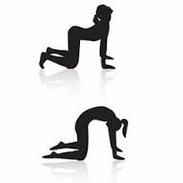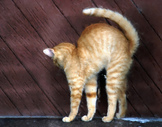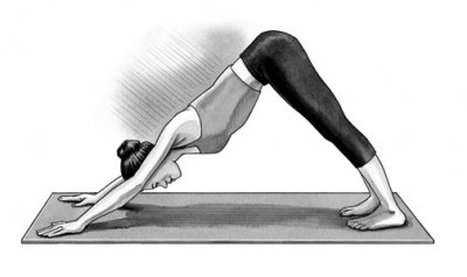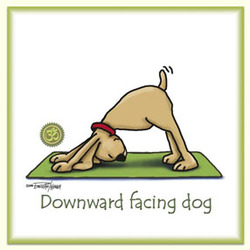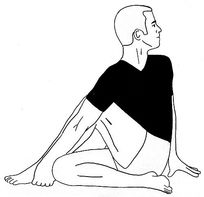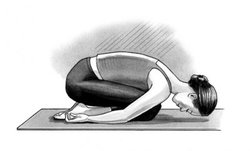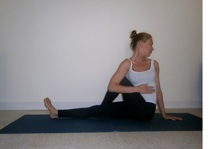Yoga For Anxiety
Yoga is a commonly known generic term for physical, mental and spiritual disciplines. There are many branches of yoga : Hatha, Juana, Karma, Bhakti, Mantra, Kundalini and others. The yoga we know today was developed as a part of the tantric civilization, which existed in India and all parts of the world more than ten thousand years ago. In ancient times yoga techniques were kept secret and were never written down. They were passed on from teacher to disciple by word of mouth.
1. Importance of Yoga in our Life
The most important benefit of yoga is physical and mental therapy. Also the aging process, which is largely an artificial condition, caused mainly by autointoxication or self-poisoning, can be slowed down by practicing yoga. Yoga is a type of exercise which is performed using various types of body postures. You can perform yoga anywhere, since it does not need any special workout equipments. Start performing yoga exercises regularly and notice how beneficial it is in keeping your mind and body healthy. By keeping the body clean, flexible and well lubricated, we can significantly reduce the catabolic process of cell deterioration. To get the maximum benefits of yoga one has to combine the practices of yogasanas, pranayama and meditation.
Regular practice of asanas, pranayama and meditation can help such diverse ailments such as anxiety, diabetes, blood pressure, digestive disorders, arthritis, arteriosclerosis, chronic fatigue, asthma, varicose veins and heart conditions. Laboratory tests have proved the yogi's increased abilities of consciously controlling autonomic or involuntary functions, such as temperature, heartbeat and blood pressure. Research into the effects of yogic practices on HIV is currently underway with promising results.
2. Anxiety and Yoga practice
Anxiety is an emotion characterized by feelings of tension, worried thoughts and physical changes like increased blood pressure. People with anxiety disorders usually have recurring intrusive thoughts or concerns. They may avoid certain situations out of worry. They may also have physical symptoms such as sweating, trembling, dizziness or a rapid heartbeat.When people are stressed or suffering from anxiety, they tend to think less logically, sleep less, eat unhealthily and practice less exercise. However, dealing with one's stress is the best idea in improving one's lifestyle so, yoga is a practical solution for these issues. Yoga helps people how to breathe deeply, using the diaphragm, which induces feelings of calm and relaxation.
Specifically, yoga is more than just stretching. It loosens up the tense muscles in the body (due to the vast amounts of stretching) especially (the high stress areas); the neck, the shoulders and the back. It combines a loosening the muscles with regular deep breathing and relaxation of the mind.
Yoga manages to relax the person by allowing you to think solely on the moment. When in a yoga pose you only think of the current pose and how it should match your breathing, thinking and balance. You can't think of your pose if you're thinking of your problems therefore, the poses are designed to make you think about the moment so you can successfully accomplish them. Yoga produces these benefits by causing the release of a chemical in the brain called gamma-aminobutyric acid during and after practicing yoga . GABA is an amino acid that helps with sleep and relaxation and blunts the activity of the sympathetic nervous system when it is keeping the constant fight in those with chronic anxiety at bay. People with low GABA levels tend to be excitable and suffer from anxiety syndromes more often than people with normal GABA levels. Yoga raises these levels by over 25%, a substantial increase with measurable clinical benefits. Better yet, the style of yoga that is practiced does not affect the GABA response. All styles (ashtanga, hatha, kripalu and vinyasa) caused similar GABA increases.
3. Best Yoga Techniques for Anxiety
When people are stressed they constantly think of their next upcoming deadlines rather than focusing on the now. Generally, anxiety can be treated by psychotherapy and some anti-anxiety meditation. However, the process of recuperation can also be aided by Yoga practice. It will help you develop a stronger state of mind, thus overcoming your fears and preventing the dangers of anxiety. In dealing with anxiety, you should consider:
Useful asanas practice to reduce anxiety : Surya Namaskar (Sun Salutation), Paschimottasana, Bhujangasana, Shalabhasana, Ardhamatsyendrasana, Akarna Dhanurasana , Trikonasana, Veerasana, Ushtrasana.
Useful pranayama practice: Anulom Vilom Deep Breathing 15 minutes, Ujjayi Pranayama without kumbhak for 10 minutes, Right Nostrill Purak followed by Bhramari Rechak (21 rounds).
Rhythmic , deep, and slow respiration stimulates and is stimulated by calm, content, states of mind. Irregular breathing disrupts the rhythms of the brain and leads to physical, emotional and mental blocks.
Meditation is a specific technique for resting the mind and attaining a state of consciousness. In meditation you are fully awake and alert, but your mind is not focused on the external world. Meditation relaxes our mind and it reduces anxiety. Meditation practice: focusing on breathing, focusing on one object, chanting Om, mantras...
Food is also very important if you want to reduce anxiety and to live healthy life. A healthy diet rich in whole food vitamins should accompany any yoga regime. A healthy diet should concentrate on antioxidant foods like fruits and vegetables, whole grains and nuts. The dependency on vitamin supplements should be kept to a minimum.
Yoga also has a low injury rate and can even prevent injuries caused by other activities by strengthening the stabilizing muscles, or the muscles on the side of your body such as the abdominal obliques and the vastus lateralis on the outside of the thigh. These muscles stabilize your joints and when strong, can help prevent overuse injuries from other sports. Aside from the chemical changes that yoga causes inside the body, the practical benefits of yoga on anxiety are also well documented. One study compared swimming, fencing,fitness training and yoga. Only yoga caused reductions in anxiety.
Yoga is a commonly known generic term for physical, mental and spiritual disciplines. There are many branches of yoga : Hatha, Juana, Karma, Bhakti, Mantra, Kundalini and others. The yoga we know today was developed as a part of the tantric civilization, which existed in India and all parts of the world more than ten thousand years ago. In ancient times yoga techniques were kept secret and were never written down. They were passed on from teacher to disciple by word of mouth.
1. Importance of Yoga in our Life
The most important benefit of yoga is physical and mental therapy. Also the aging process, which is largely an artificial condition, caused mainly by autointoxication or self-poisoning, can be slowed down by practicing yoga. Yoga is a type of exercise which is performed using various types of body postures. You can perform yoga anywhere, since it does not need any special workout equipments. Start performing yoga exercises regularly and notice how beneficial it is in keeping your mind and body healthy. By keeping the body clean, flexible and well lubricated, we can significantly reduce the catabolic process of cell deterioration. To get the maximum benefits of yoga one has to combine the practices of yogasanas, pranayama and meditation.
Regular practice of asanas, pranayama and meditation can help such diverse ailments such as anxiety, diabetes, blood pressure, digestive disorders, arthritis, arteriosclerosis, chronic fatigue, asthma, varicose veins and heart conditions. Laboratory tests have proved the yogi's increased abilities of consciously controlling autonomic or involuntary functions, such as temperature, heartbeat and blood pressure. Research into the effects of yogic practices on HIV is currently underway with promising results.
2. Anxiety and Yoga practice
Anxiety is an emotion characterized by feelings of tension, worried thoughts and physical changes like increased blood pressure. People with anxiety disorders usually have recurring intrusive thoughts or concerns. They may avoid certain situations out of worry. They may also have physical symptoms such as sweating, trembling, dizziness or a rapid heartbeat.When people are stressed or suffering from anxiety, they tend to think less logically, sleep less, eat unhealthily and practice less exercise. However, dealing with one's stress is the best idea in improving one's lifestyle so, yoga is a practical solution for these issues. Yoga helps people how to breathe deeply, using the diaphragm, which induces feelings of calm and relaxation.
Specifically, yoga is more than just stretching. It loosens up the tense muscles in the body (due to the vast amounts of stretching) especially (the high stress areas); the neck, the shoulders and the back. It combines a loosening the muscles with regular deep breathing and relaxation of the mind.
Yoga manages to relax the person by allowing you to think solely on the moment. When in a yoga pose you only think of the current pose and how it should match your breathing, thinking and balance. You can't think of your pose if you're thinking of your problems therefore, the poses are designed to make you think about the moment so you can successfully accomplish them. Yoga produces these benefits by causing the release of a chemical in the brain called gamma-aminobutyric acid during and after practicing yoga . GABA is an amino acid that helps with sleep and relaxation and blunts the activity of the sympathetic nervous system when it is keeping the constant fight in those with chronic anxiety at bay. People with low GABA levels tend to be excitable and suffer from anxiety syndromes more often than people with normal GABA levels. Yoga raises these levels by over 25%, a substantial increase with measurable clinical benefits. Better yet, the style of yoga that is practiced does not affect the GABA response. All styles (ashtanga, hatha, kripalu and vinyasa) caused similar GABA increases.
3. Best Yoga Techniques for Anxiety
When people are stressed they constantly think of their next upcoming deadlines rather than focusing on the now. Generally, anxiety can be treated by psychotherapy and some anti-anxiety meditation. However, the process of recuperation can also be aided by Yoga practice. It will help you develop a stronger state of mind, thus overcoming your fears and preventing the dangers of anxiety. In dealing with anxiety, you should consider:
- Practicing Asanas to maintain a healthy nervous system,
- Pranayama to gain better self-awareness and acquire a more peaceful state of mind, and
- Meditation for a stronger concentration and focus of the mind that can eventually lead you away from your fears.
Useful asanas practice to reduce anxiety : Surya Namaskar (Sun Salutation), Paschimottasana, Bhujangasana, Shalabhasana, Ardhamatsyendrasana, Akarna Dhanurasana , Trikonasana, Veerasana, Ushtrasana.
Useful pranayama practice: Anulom Vilom Deep Breathing 15 minutes, Ujjayi Pranayama without kumbhak for 10 minutes, Right Nostrill Purak followed by Bhramari Rechak (21 rounds).
Rhythmic , deep, and slow respiration stimulates and is stimulated by calm, content, states of mind. Irregular breathing disrupts the rhythms of the brain and leads to physical, emotional and mental blocks.
Meditation is a specific technique for resting the mind and attaining a state of consciousness. In meditation you are fully awake and alert, but your mind is not focused on the external world. Meditation relaxes our mind and it reduces anxiety. Meditation practice: focusing on breathing, focusing on one object, chanting Om, mantras...
Food is also very important if you want to reduce anxiety and to live healthy life. A healthy diet rich in whole food vitamins should accompany any yoga regime. A healthy diet should concentrate on antioxidant foods like fruits and vegetables, whole grains and nuts. The dependency on vitamin supplements should be kept to a minimum.
Yoga also has a low injury rate and can even prevent injuries caused by other activities by strengthening the stabilizing muscles, or the muscles on the side of your body such as the abdominal obliques and the vastus lateralis on the outside of the thigh. These muscles stabilize your joints and when strong, can help prevent overuse injuries from other sports. Aside from the chemical changes that yoga causes inside the body, the practical benefits of yoga on anxiety are also well documented. One study compared swimming, fencing,fitness training and yoga. Only yoga caused reductions in anxiety.
